The topic of this competition "The Future of Housing-before and after a pandemic" received 328 works from 35 countries around the world, and the results were quite fruitful. Although it was only a conceptual design competition, and the results will not be implemented, some of the conceptual ideas also reflect the impact of the pandemic of COVID-19 on us over the past year or so.
本次競圖主題「住宅的未來–在大流感來臨之前與之後」收到了全世界35個國家的328件作品,成果頗為豐碩;雖然是紙上建築結果並不會執行,但其中若干概念構想也確實反映了這一年多來疫情對我們的影響。
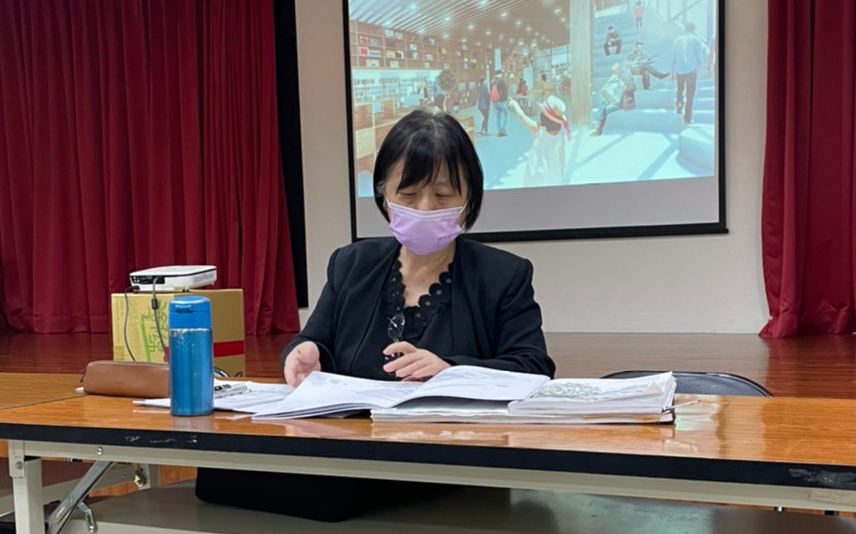
On top of that, since the judge attaches great importance to the feasibility of the ideas, many possible changes in the living model after the pandemic can be found in the winning works. The following are the discussions regarding what I have seen or missed in the winning works.
且因為評審頗為重視方案之可執行性,多少可從優勝的作品中發現許多疫情後居住模式之可能之改變,以下就參賽優勝作品中所見或是未及之處做一探討:
Ventilation, Lighting, and Balcony
通風採光與陽台
The tuberculosis of more than a century ago and the influenza pandemic of 1918 had a great influence on the architectural style. Open and transparent sanatoriums came into being. The design focuses on balconies, light and air. This concept is also highlighted in several winning works this time. The pandemic has urged us to reconsider the necessity of opening windows for natural ventilation in buildings, especially to help us realize the advantages of energy saving, carbon reduction, and a friendly environment. Also, the healthy housing issues extended from this, including the improvement of physical and mental health, need to be further explored and promoted.
一個多世紀以前的結核病和1918年的流感大流行對建築風格有著很大影響,開放通透的療養院應運而生,設計重點在於陽台、光線和空氣;這個概念也在本次若干優勝作品中凸顯出來,疫情讓我們重新省思建築物開窗自然通風的必要性,尤其在節能減碳、友善環境上的優點;由此延伸出來的健康住宅議題,包括生理與心理健康之增進,有待進一步探討與推廣。
The images circulated on the Internet of everyone singing together on the balcony are quite inspiring, and it also allows the depression and anxiety caused by isolation to be expressed. People can only have a connection with the outside world when they go out and on semi-outdoor balconies. Planting and greening on the balcony should make the effects more obvious, so the importance of the balcony can be said to be self-evident. This point has also been observed by the winners, and they have done a good job on dealing with the issue.
在網路上流傳大家在陽台高歌互唱的畫面頗為激勵人心,也讓隔離所產生的抑鬱、焦慮之情緒得以抒發;人們只有走出室內、在半戶外之陽台才能產生與外界自然的聯繫,若是陽台植栽綠化其效果當更加明顯,由此陽台之重要性可謂不言而喻,此點也有優勝者觀察到而做了很好的處理與表現。
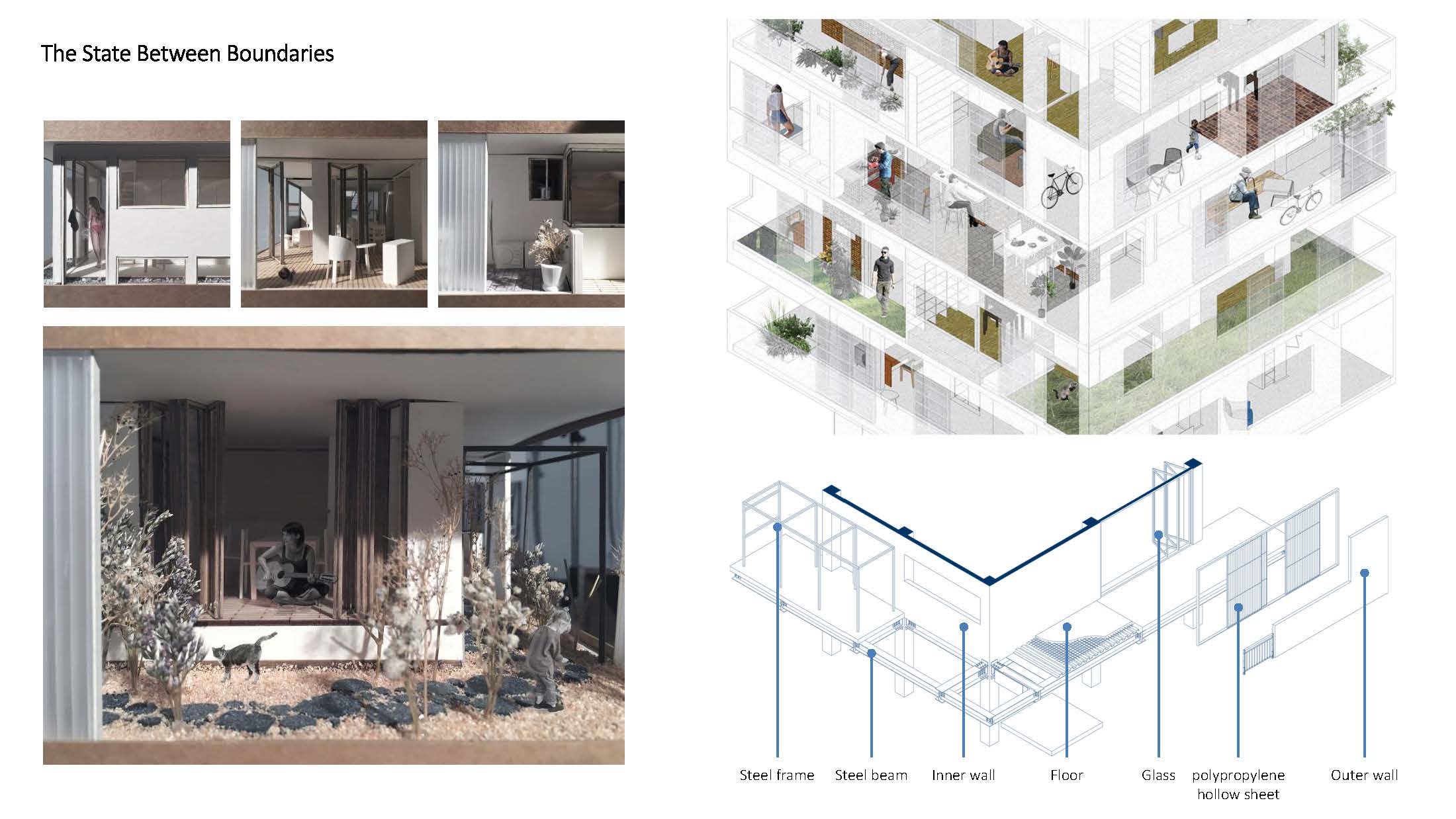
Redefinition of Home
家的重新定義
In the modernist trend of depersonalization, the feeling and function of "home" as a personal shelter does not seem to be important anymore. However, under the pandemic, people have new demands for home, because home may now add a variety of different new functions. It may become a temporary office, workshop, gym, classroom….
在現代主義的去個人風格化潮流中,「家」作為個人庇護所的感受和功能似乎不再重要,然而在疫情之下,人們對家有了新的要求,因為家現在可能添加了五花八門的新功能:可能成為臨時辦公室、工作坊、健身房、教室…
Therefore, a "flexible space" may be needed in the apartment, which can be used as a home office, study room, storage room, or a place for children to study. At home, we may also need open space for activities or sports. The importance of the entrance hall is also highlighted. It is a transitional area between the outside world and the inside of the apartment, allowing people to wash their hands, take off their shoes and coats, unpack packages and deliver items, and may even be designed as a janitorial supplies room with a sterilization function. In addition, the way of sterilization, social distancing, and traffic flow in the house should also be reconsidered. Design and response to the pandemic in these units seem to be missed in the works.
因此在公寓裡可能需要安置一處「靈活空間」,可當成家庭辦公室、書房、儲藏室、或是孩子學習的地方;家中可能也需要開放的空間來做活動或運動。入口玄關的重要性也彰顯出來,它是外部世界和公寓內部之間的過渡區域,讓人們能洗手、脫鞋、脫外套、收拆包裹及外送物品,甚至可能設計成具有消毒功能的清潔室。另外,消毒與隔離的方式、進屋之動線處理也都應該重新思考,這些單元空間內的疫情因應與設計似乎在參賽作品中比較看不到。
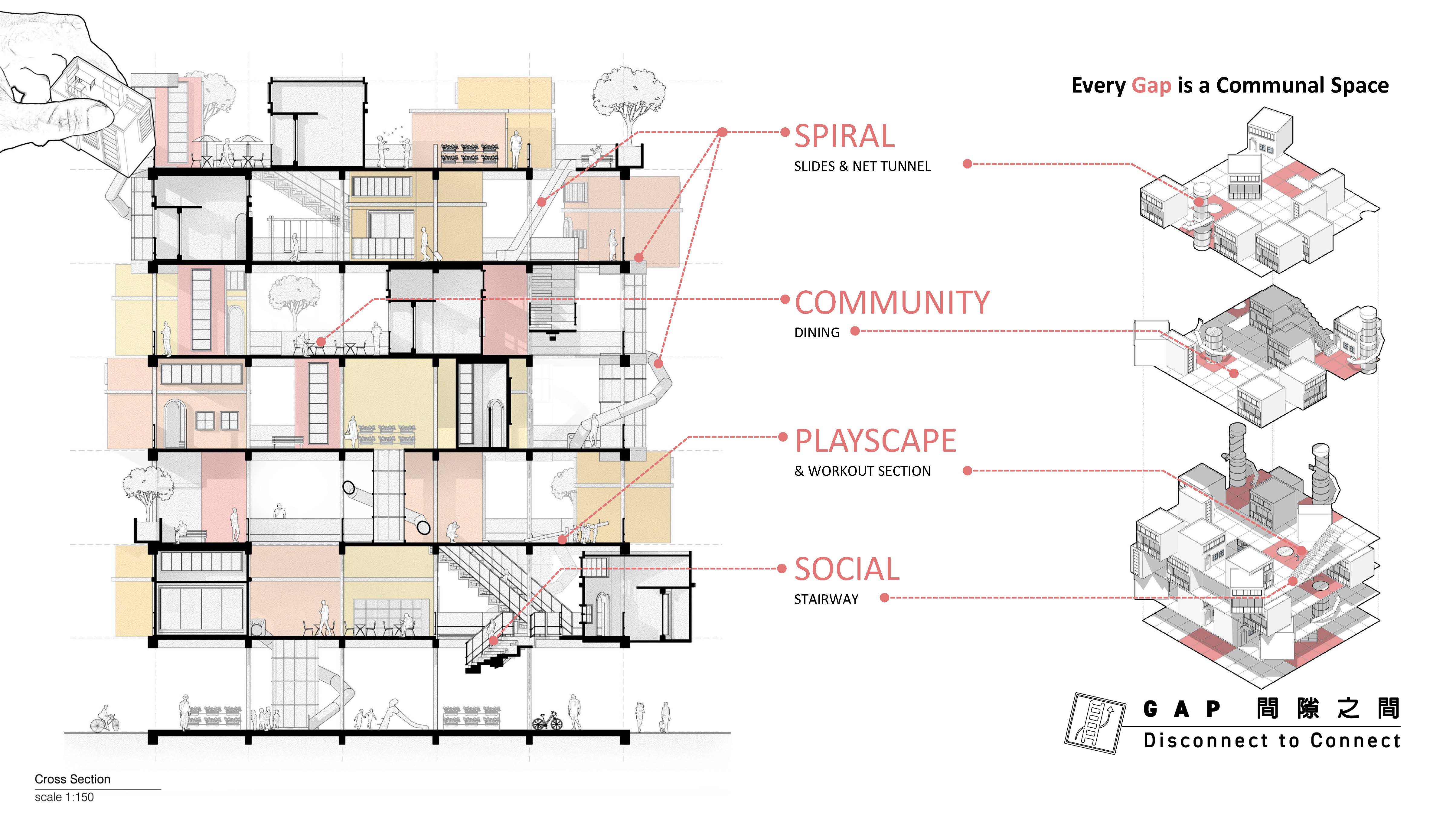
Changes in the Role of Public Spaces
公共空間角色之改變
Public space and open activity space are the only public resources that can be shared by all levels of the community, including public space, green corridors, gardens and green spaces, as well as cultural and recreational activity centers, libraries, gymnasiums and other ecological, cultural and leisure spaces. Besides, gardens and farms of local production even provide green food. These enable people to get what they need for life or conduct social behavior without having to go to restaurants, cafes, and KTVs, which improve their physical and mental health, creating a vibrant community.
公共空間和開放活動空間是社區內唯一各個階層能共用的公共資源,包括公共空間、綠化走廊、庭園綠地,以及文康活動中心、圖書館、體育館等生態、文化及休閒空間;甚至提供綠色飲食之在地生產的菜圃、農園,使人們無需到餐廳、咖啡廳、KTV便可得到生活所需或是社交行為,有助於其身心健康,並創造具活力的社區。
When a pandemic occurs, residents do not need to take public transportation, but can still reach the community to use facilities and enjoy cultural and natural spaces. This demand should be the core topic of this competition, which also takes everyone's attention and being put in the design. The use and flexibility of space before, during and after the pandemic of COVID-19 may be explained; however, the following questions also need to be answered: How to balance social interaction and safety in public spaces? How to control activities and traffic flow in spaces of different scales to reduce contact? How to diversify the use of buffer space? How to better manage and carry out quarantine strategies?
當有疫症出現時,居民不用搭乘公共交通工具,仍能到達社區使用設施,享受到文化和自然的空間。這個需求應是本次競圖最為核心的議題,也得到大家的重視與納入設計,只是疫情前、中、後之空間使用與彈性或有得到闡述,以下問題似乎也需要解答:公共空間之社交互動與安全性如何兼顧?不同尺度空間之活動行為、動線如何管制以減少接觸?緩衝空間如何多元應用?如何更深入的規劃管理與隔離策略?
In fact, in the real world, many agencies and companies have done research on environmental planning after the pandemic, rethinking the new definition of public spaces such as parks, sports venues, and community centers, and making advantage of architectural design to find a balance between social activities and safety. It can meet short-term needs and respond to temporary changes in the future. Simultaneously, it uses modular design to transform or build new temporary hospitals and quarantine sites, or formulate relevant regulations and design specifications.
其實在現實社會中,已有不少機關、公司都朝疫情後之環境規劃做研究,重新思考公園、運動場所、社區中心等公共空間的新定義,運用設計找到社交與安全的平衡點,既能滿足短期需求,又能因應未來臨時的變化;或利用模組化設計改造或新建臨時醫院與隔離場域,或制訂相關守則與設計規範。
The City of Baltimore, the United States, the Bloomberg School of Public Health and the Neighborhood Design Center jointly proposed the "Design for Distancing Ideas Guidebook", which provides a reference solution for the redesign of public spaces in the post-pandemic era. The British government has also published the "COVID-19 Secure: Safer Public Places–Urban Centres and Green Spaces" design specification, hoping to accelerate the deployment of safe urban public spaces.
美國巴爾的摩市與布隆伯格公共健康學院(Bloomberg School of Public Health)、在地設計中心(Neighborhood Design Center)共同提出了《Design for Distancing Ideas Guidebook》,為後疫情時代公共空間再設計提出參考解決方案;英國政府也出版《COVID-19 Secure: Safer Public Places–Urban Centres and Green Spaces》設計規範,希望加速佈建安全的城市公共空間。
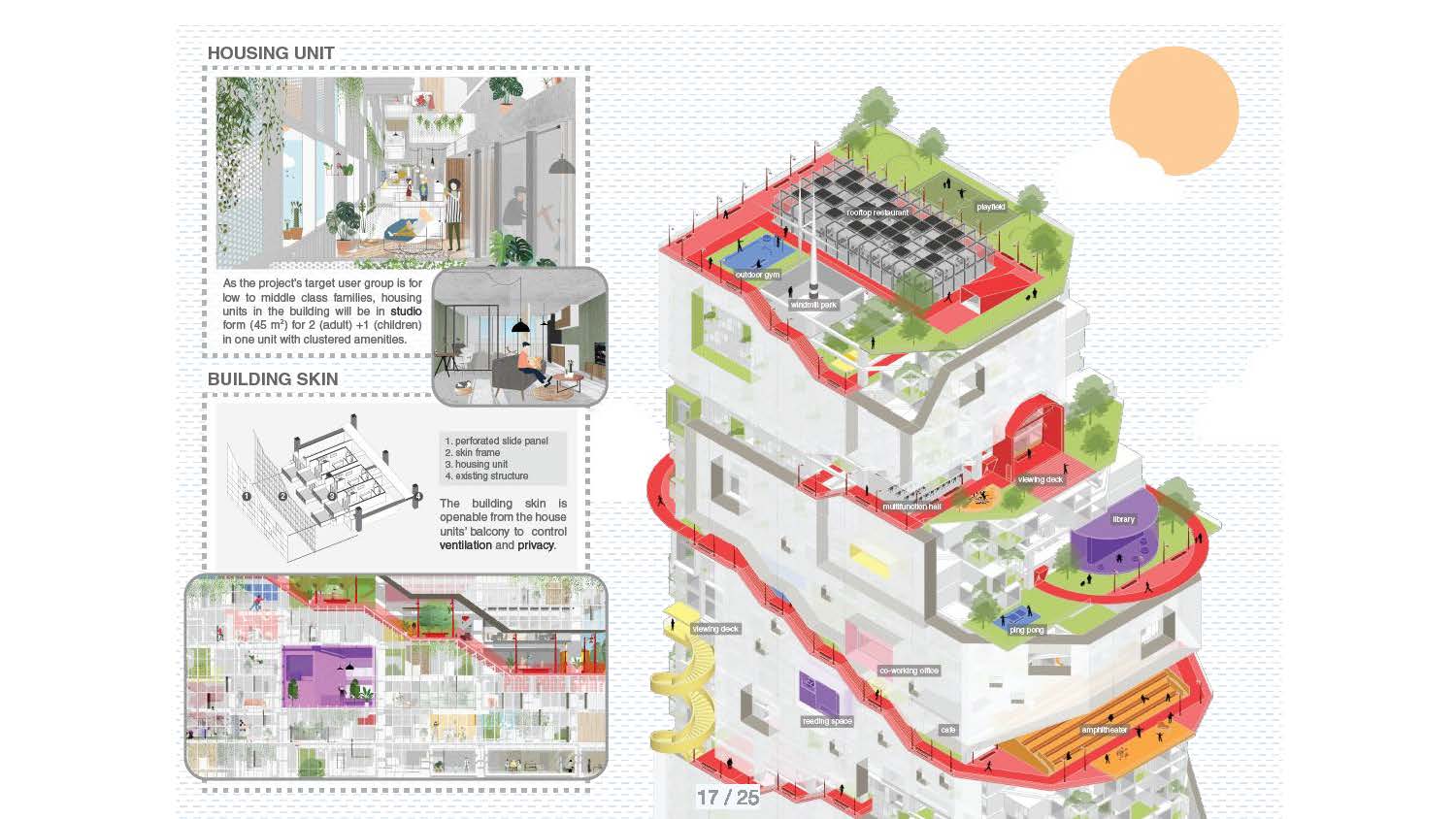
Community Micro-Urbanization
社區微都市化
Under the concept of pandemic management, self-sufficient complex communities declare decentralization from the city level to the community level: the community unit has public service facilities and places such as medical clinics, schools, post offices, and family support centers.
在疫情管理的概念下,自給自足的複合社區宣示由都市層級到社區層級的去中心化:社區單元有醫療診所、學校、郵局、家庭支援中心等公共服務設施及場所。
Most winning works have dealt with meeting residents’ daily needs in terms of food, job, medical treatment, business, leisure, schooling, social interactions, daily life, and housing. It’s a pity that there seems to be a lack of response and discussion from the community to the urban planning scale, such as the interface between the city and the community, the distribution of the relationship between the public space, park square and the community, how to conduct city and street lockdown by area, the closure and selectivity of the street, and how the transportation system should respond to the lockdown, etc.
在飲食、工作、醫療、商業、休閒、就學、社交、生活、居住方面滿足其日常所需,這一點多位優勝作品都有著墨。而比較遺憾的是此次似乎缺乏從社區到都市規劃尺度,對疫情之反應與探討,例如都市與社區之介面、公共空間公園廣場與社區間的關係的分配、都市如何分區封鎖、街廓封鎖、部分空間封鎖、街道的封閉與選擇性、與交通方面之因應……等等。
Melbourne, Australia proposed the "20-minute Neighborhood". A number of professional consulting companies also proposed to build an ecological community with a 15-20 minute walking distance. Starting from the needs of people, the establishment of a multi-center (Polycentric) district allows self-sufficiency in work, shopping, leisure and other functions, maintaining flexibility and being agile to cope with disasters, reducing the risk of cluster infection in major metropolitan areas. It has shown that strengthening small-scale living circles may be the next trend of city design.
澳洲墨爾本提出了「20分鐘生活圈方案(20-minute Neighborhood)」,多家專業顧問公司也提出以15-20分鐘步行距離建構的生態社區,從人本需求出發,建立多中心(Polycentric)區內工作、購物、休閒等功能自給自足,保有彈性、能敏捷應付災害的能力,降低各大都會區人口群聚感染的風險;在在顯示強化小規模的生活圈可能是下一波城市設計的方向。
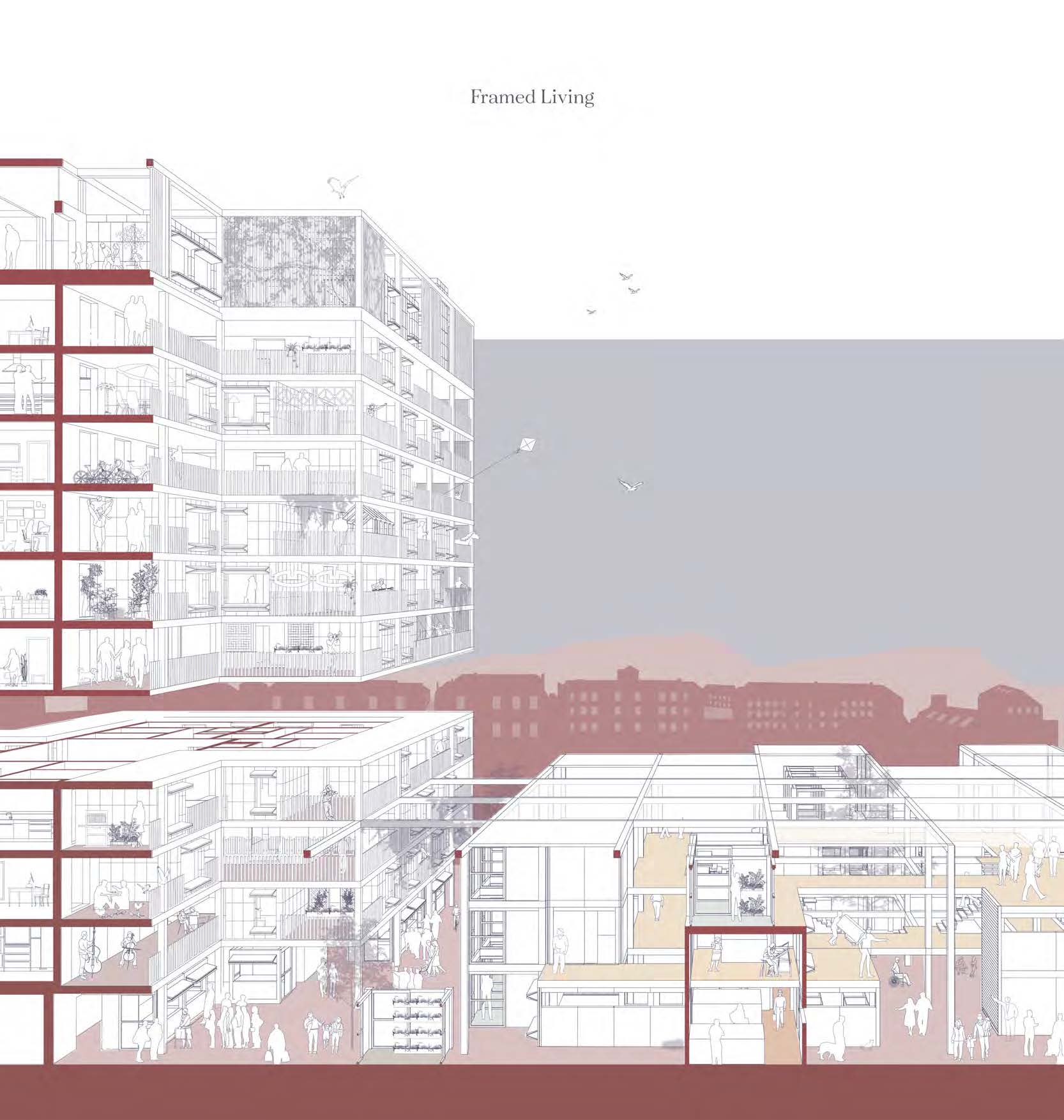
Green Transportation Plan
綠色交通運輸規劃
Due to the risks of contact on public transportation, autonomous cars and micromobility networks may become more and more important. Cycling and walking may replace public transportation when the pandemic is raging. Therefore, it is necessary to redraw temporary bicycle roads and widen pedestrians. The road area allows citizens to move lightly, autonomously, and safely, while reducing traffic flow on streets of residential areas.
因為公共交通接觸的風險,無人駕駛汽車和微型交通網絡(Micromobility)可能變得越來越重要,疫情中單車和步行可能會取代搭乘公共交通工具、因此需要改劃出臨時單車路、加寬人行道路面積,讓市民可以輕便、自主、安全地移動,同時減少住宅區街道上的交通流量。
The UK has expanded its bicycle lanes (Pop-up cycle lanes) on a large scale, and many cities have also begun to re-plan streets to make cycling and walking more user-friendly. Mobycon, a Dutch transportation consulting company, issued a design guide "MAKING SAFE SPACE FOR CYCLING IN 10 DAYS'' during the pandemic, proposing design specifications for road infrastructure or traffic signs to help local governments open bicycle lanes at low cost.
英國大規模擴充自行車道(Pop-up cycle lanes),多個城市也開始重新規劃街道,提升騎車和步行的友善性。荷蘭交通運輸顧問公司Mobycon更於疫情期間發布設計指南《MAKING SAFE SPACE FOR CYCLING IN 10 DAYS》,提出道路基礎設施或交通標誌的設計規範,幫助地方政府以低成本開設自行車道。
Nevertheless, the long-term solution still requires interdisciplinary cooperation between urban planning, urban design, transportation, architecture, ecology and even historical and cultural experts to design service processes as well as infrastructure that improve safety and sustainability, establishing a human-lead instead of car-centered, safe, low-carbon emission transportation system
不過長期治本之解決方案,還是需要都市規劃、城市設計、交通運輸、建築、生態甚至歷史文化專家之間跨領域合作,設計出提升安全性和永續性的服務流程及基礎建設,建立以人而非汽車為核心、安全、低碳的交通系統。
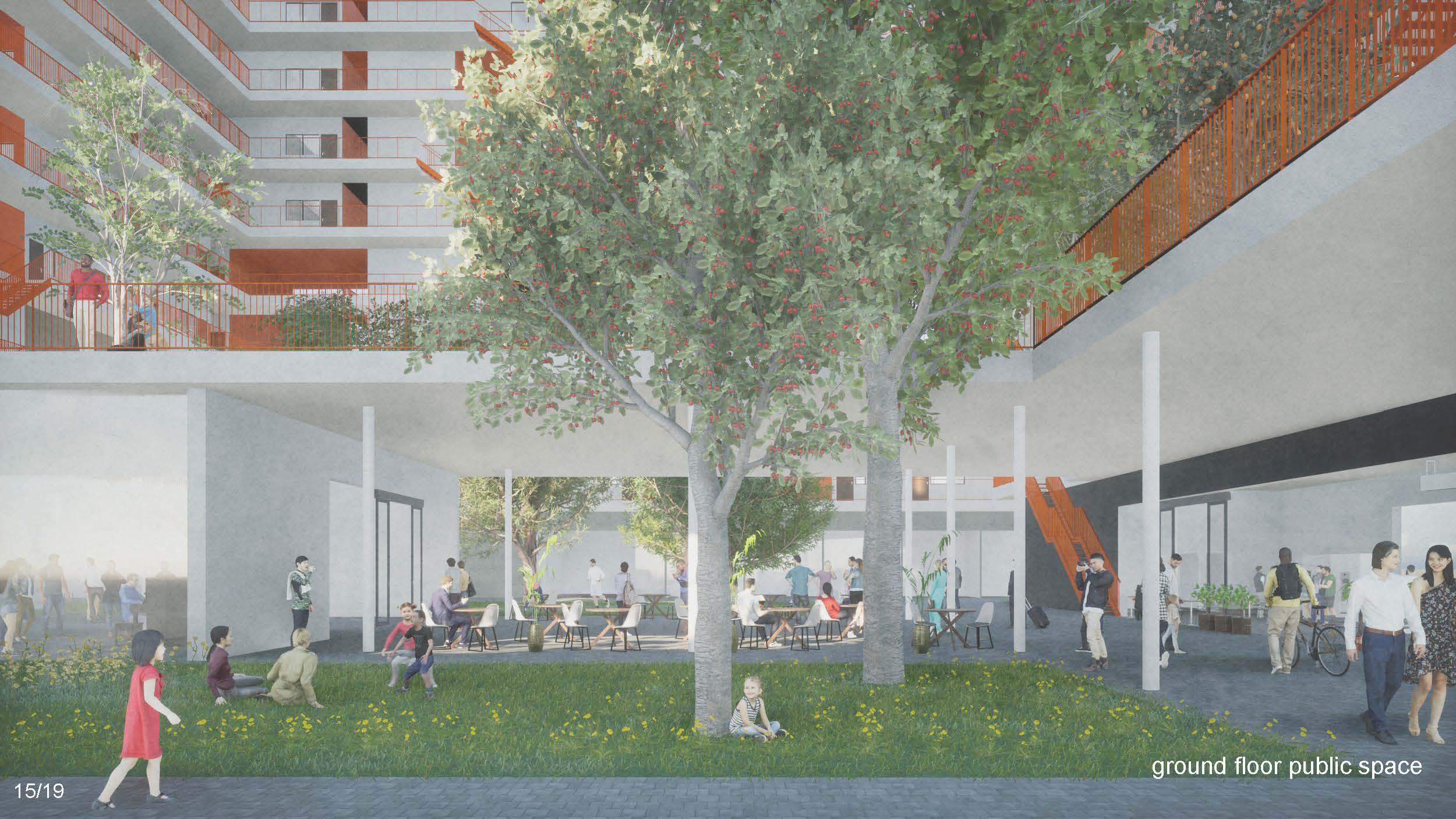
Applications of More Advanced Smart Technology
更先進的科技智慧工具之應用
To avoid infection caused by contact, a "smart city" including retail industry's digitalization, cashless economy, remote work and virtual service will all be developed. Smart technology is increasingly prevalent. Voice control, automatic indoor ventilation, filtration, disinfection and sterilization, machinery, and air-conditioning systems will be upgraded. Smart home systems and self-sufficient power and water supply facilities could not only control indoor temperature, but also control the quality of air and water supply, which provides a healthier, sanitary, and safer indoor environment.
為避免接觸產生的感染,零售業的數位化、無現金經濟、遠端工作和虛擬服務的「智慧城市」都將得到發展;智慧科技越來越普及,聲控、自動室內通風、過濾、消毒殺菌的方式、機械、空調系統都會升級,智慧家庭系統與自給自足的供電與供水設施,不僅能控制室內溫度,也能控制空氣與給水的品質,也提供更健康、衛生、安全的室內環境。
In addition, in response to the shared environment of the smart home of multiple users, heterogeneous devices are seamlessly integrated and linked with healthcare devices. The trend of the future contains using digital technology to help identify disease risks, sensors of real-time detection of surface viruses, and the development of more non-contact technologies, etc. Robots, drones and big data can track the pandemic, disinfect hospitals and deliver supplies, which are also the focus of attention. Perhaps this part is too technical, and few teams mention it in this competition.
另外,因應多元使用者智慧家庭的共享環境,將異質設備無縫整合,並與醫療保健裝置鏈結,利用數位科技協助識別疾病風險、即時檢測表面病毒感測器、開發更多非接觸科技等都是未來的方向;機器人、無人機及大數據可追蹤疫情,並對醫院進行消毒與運送物資,也是值得關注的焦點。這部分或許因為太偏技術層面,本次競圖少有人提及。
In the post-pandemic era, there may be more reasons to attempt to use digital technology to track people's behavior, and there will also be more fierce debates about whether surveillance functions should be given to private companies and state apparatus. In fact, as emergent disaster measures become standardized or even permanent, the specter of authoritarianism should be the most important thing we need to pay attention to.
在後疫情時代,可能有更多理由嘗試利用數位科技去掌握人們的行為,也會出現更多對於監控功能是否該交給私人公司及國家機器的激烈辯論。事實上,隨著緊急災難措施正常化甚至永久化,威權主義的幽靈應該是我們最需注意的。
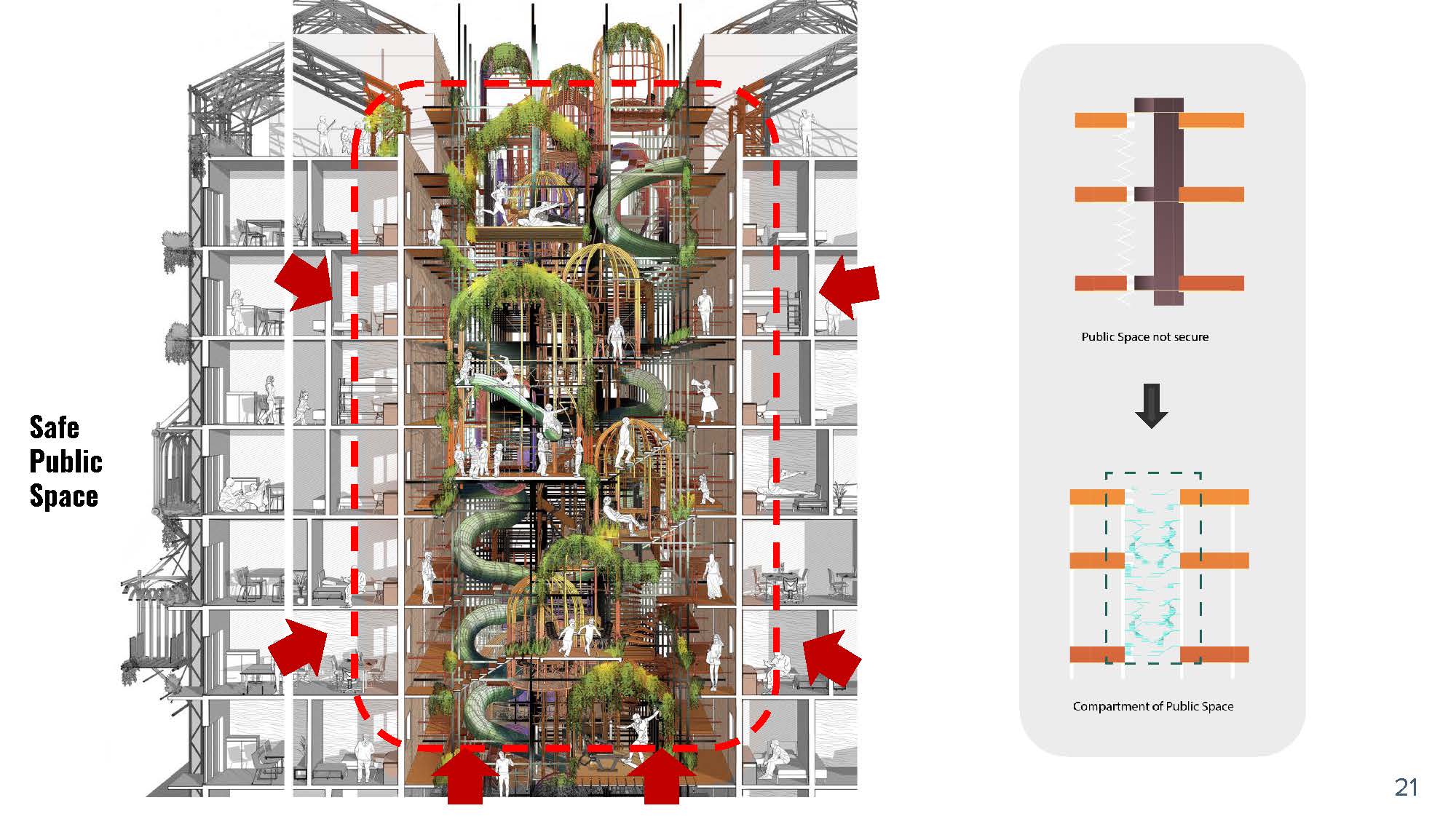
People-Oriented Resilient Cities
以人為本的韌性城市
The pandemic has accelerated the long-term development trend, zoning planning and management policies of the city. During the pandemic, many sports venues, exhibition centers and other places have been used as temporary emergency medical facilities or shelter centers. Therefore, the German architect firm Opposite Office proposed to transform the newly-built Berlin airport into a "Superhospital-Circular Treatment Pod" that can be replicated in any airport in the world to respond to future emergent needs.
這次疫情加速影響了城市長期的發展趨勢、分區規劃和管理政策,疫情中可看到多所運動場館、展覽中心等地作緊急臨時醫療設施或收容中心,因此德國建築師事務所Opposite Office提議將尚在新建的柏林機場改造為可於世界任何機場複製的「超級醫院(Superhospital)─圓形治療艙」,以因應未來緊急的需求。
Cities must have a high degree of adaptability and flexibility to provide people with a safe and trustworthy life. The aforementioned transformation of buildings and public spaces to maintain social distancing, and strengthen the health system to deal with future threats, or use mobile facilities and lightweight transportation to meet the needs of living is a way to build a resilient city. We must be prepared for long-term coexistence with the pandemic.
城市須具備高度適應性與彈性應變能力,以提供民眾安全信賴的生活,前述改造建築物和公共空間以保持社交距離,並加強衛生系統以應對未來的威脅,或是以移動設施、輕量交通滿足生活需要,都是建構韌性城市的措施,我們要有與疫情長期共存的準備。
In this competition, I have several evaluation indicators in mind: farsightedness, ideality, global versatility, locality, affordability, but all the indicators actually fall into one: in line with the human needs of the ever-changing times. In response to the new normal life after the pandemic, how do we plan for better and more livable cities? Can we implement smart urban density and green investment in a better way?
本次競圖我有設想幾個評估指標:前瞻性、理想性、全球通用性、在地性、可負擔性…,但所有指標其實歸於一宗:符合時代變化的人性需求。因應後疫情的新生活常態,我們究竟該如何規劃更好、更宜居的都市?我們可以更好地推進智慧密度和綠色投資嗎?
The pandemic has given the planet a respite, and it’s the time for humans to reflect on their own insignificance. By making cities healthier in a simple, sustainable, environmentally-friendly, and energy-saving way, every human being can live safer and healthier, coexisting with all beings on the planet.
疫情讓地球獲得喘息,而人類也該反思自己的渺小,以簡單、永續、環保、節能的方式讓城市更健康,每一個人才能夠活得更安全、更健康,並與地球萬物共存。
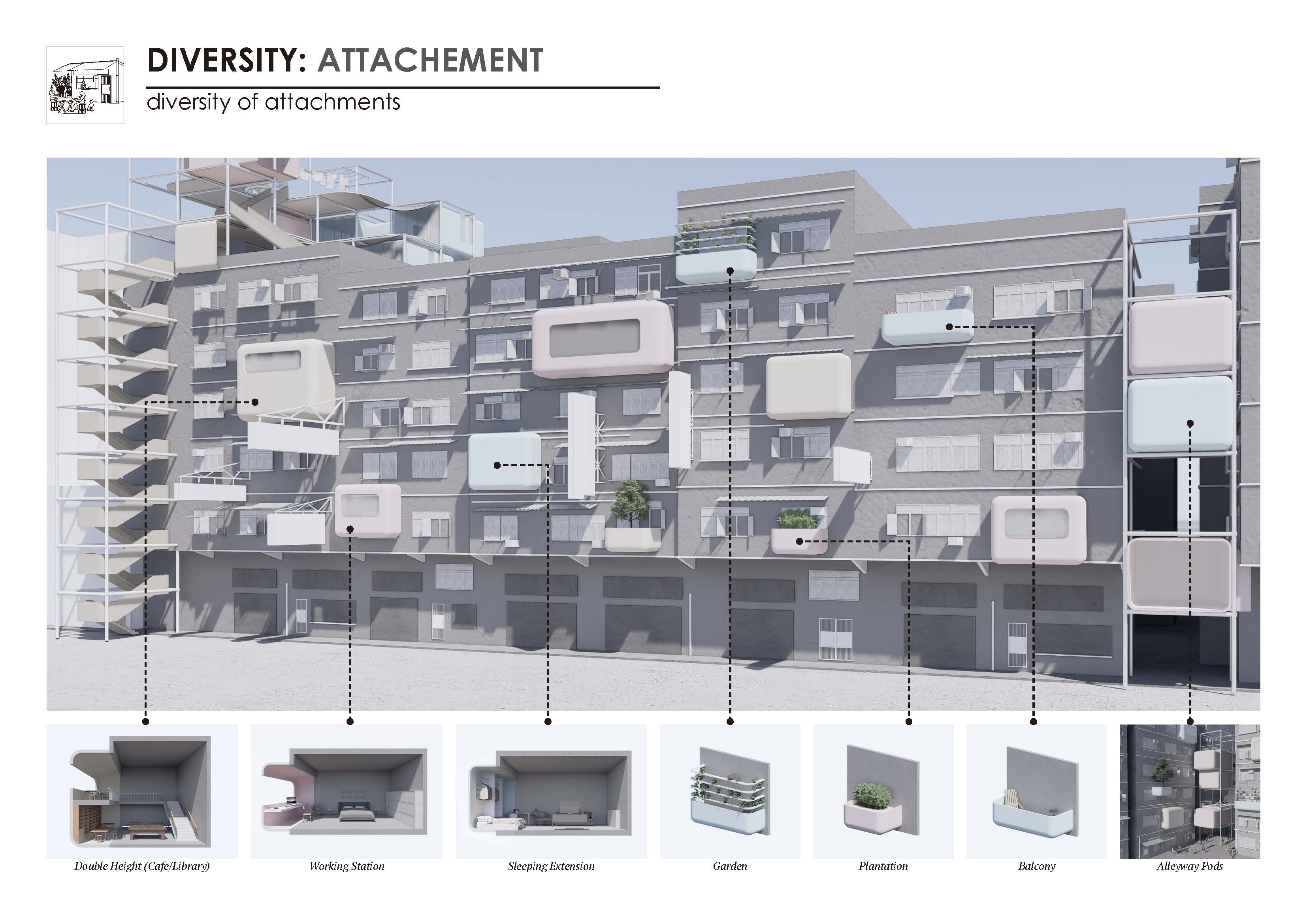
【延伸閱讀】
>住宅的未來/Francine Houben
https://www.traa.com.tw/Event/News/185
>2021紙上住宅建築國際競圖結果出爐
https://traa.com.tw/Event/News/177
>2021紙上住宅建築國際競圖 徵件開始
https://www.traa.com.tw/Event/News/132
>張清華建築師談「可適的韌性建築」
https://www.traa.com.tw/Event/News/142
>李金威建築師談Are we ready? Architecturally speaking.
https://www.traa.com.tw/Event/News/148
>>>>>>>>>>>>>>>>>
文字撰寫整理:王進坤/traa台灣住宅建築獎執行經理
